
Henry Ward Ranger oil, "Stormy Day"
Henry Ward Ranger Sale History
View Price Results for Henry Ward Ranger
Related Paintings
More Items from Henry Ward Ranger
View MoreRecommended Art
View More















Item Details
Description
Henry Ward Ranger (New York/Connecticut, 1858-1916) oil on board landscape with gray, clouded sky. Signed "To J.H.R. / H.W.R." lower left; estate stamp lower right. Title en verso on paper label for Sessions Hootsell American Paintings, Natchez, MS. Later giltwood frame with linen liner. Sight - 11 1/2" H x 13 1/2" W Framed - 19" H x 21" W. Provenance: the collection of Mr. and Mrs. H.R. Slaymaker, Nashville, Tennessee; the collection of Dr. Benjamin H. Caldwell, Jr., Nashville; Sessions Hootsell American Paintings, Natchez; estate of the artist. Biography: A key person in the establishment of the Old Lyme, Connecticut art colony in 1899, Henry Ward Ranger is regarded as leader of the Tonalist movement in America. He was born and raised in New York. While studying art in France, he became greatly interested in the Barbizon School of painters. A trip to The Hague, Holland, was even more influential when he met a large colony of Dutch painters called "The Hague School", whose emphasis was on Realism and Tonalism. In 1885, Ranger moved to New York City and took up easel painting, increasingly favoring oils over watercolors. Gradually his palette lightened with color and luminosity suggesting the influence of George Inness. In the summer of 1899, Ranger discovered Florence Griswold's boardinghouse in Old Lyme, Connecticut, and he eventually became the leader of the artists' colony of Old Lyme for three years. However, the prevalent style changed to Impressionism with the 1903 arrival of Childe Hassam. He became disenchanted with painting at Old Lyme with the arrival of Childe Hassam in 1903 and the subsequent influence of his Impressionist style. In protest of the plein-air, fast painting, and lightened palette and abstraction of these Impressionists, Ranger, in 1905, moved farther down the coast to Noank, Connecticut near the mouth of the Mystic River. Like many of his associates, he also maintained a studio in New York City, where he was very prominent and often lectured and wrote about art and took an active part in the art community. He was a member of the National Academy of Design and the National Arts Club. He left his estate to the National Academy of Design to establish the Ranger Fund, whose income was to purchase the works of living American artists beyond the age of forty-five. (source: Askart). (Additional high-resolution photos are available at www.caseantiques.com.)
Condition
Overall very good condition. Couple of small light scratches (under 1") lower right, a few scattered tiny inclusions. Examined under black light no alterations detected.
Buyer's Premium
- 28%
Henry Ward Ranger oil, "Stormy Day"
Estimate $1,000 - $1,500
43 bidders are watching this item.
Shipping & Pickup Options
Item located in Knoxville, TN, usSee Policy for Shipping
Payment
Accepts seamless payments through LiveAuctioneers

TOP














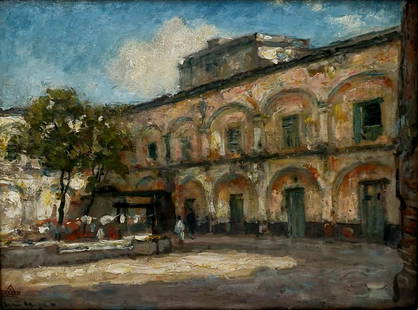




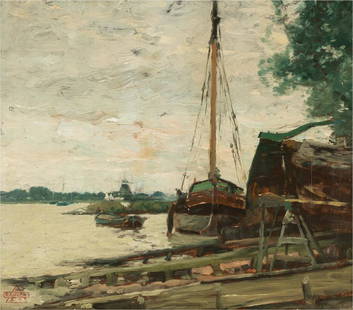
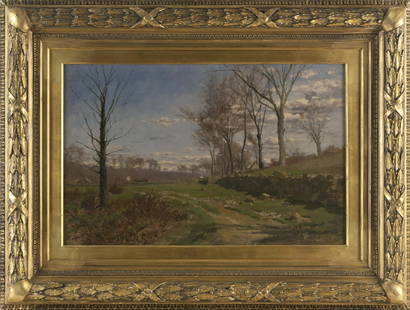
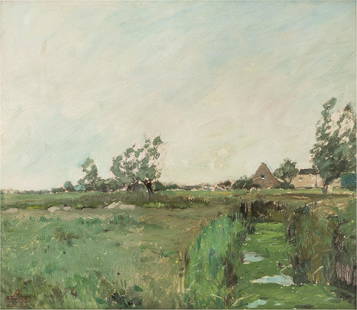






















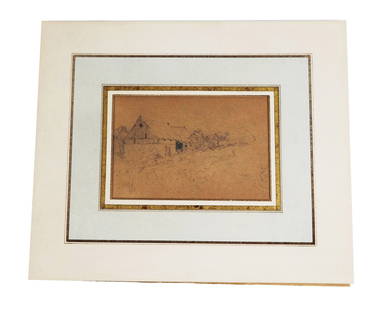


![Emilio Grau-Sala "Sur la Plage" Oil on Canvas: Emilio Grau-Sala (Spanish, 1911-1975), "Sur la Plage" [On The Beach], Oil on Canvas, 1958, signed "Grau Sala" lower right, signed, inscribed "Trouville", dated, and titled to verso. Image: 21.5" H x 2](https://p1.liveauctioneers.com/5649/328023/176731071_1_x.jpg?height=310&quality=70&version=1714409606)













